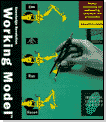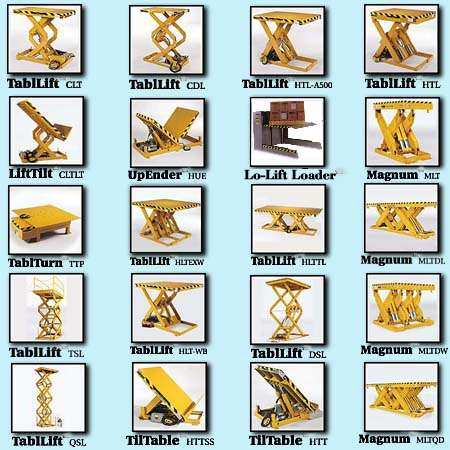Raccolta casi Working Model, visualNastran & SimWise - Bishamon

Contatto Editoriale:
Paolo Lista,
Lista Studio srl®
Borgo Belvigo 33, 36016 Thiene Vi ITALY
tel/fax 0445,372479 o info@lista.it
Bishamon lift equipments are improved with Working Model 2D®
Bishamon Industries, a manufacturer of industrial material handling equipment, uses Working Model, Inc.'s Working Model® 2D 4.0 kinematics and dynamics software for routine design simulation, improving overall work productivity and producing equipment faster.
The Bishamon family product line includes some 15,000 different models
of lift equipment that are distributed in seven continents and more than
18 countries worldwide.
Bishamon's plant and West Coast operations are
located in Ontario, California, with a second plant, ECOA Lift Operations,
in Miami, Florida. Sixty percent of Bishamon ECOA's lift orders are
custom made to suit a customer's particular application.

Hydraulic Forces on Cylinder Critical
All of Bishamon ECOA's lifts are powered by hydraulic cylinders
which are needed to achieve the large load capacities for industrial use.
A hydraulic cylinder is basically a tube closed at each end with a moveable
piston located inside, which is attached to a piston rod.
As the hydraulic cylinder extends, the platform of the lift raises
vertically.
"It is very important to find the optimal mounting position of a hydraulic cylinder," explains Zersis Mehta, a project engineer in ECOA's engineering department. "This optimal position will ensure the least amount of forces acting on the cylinder for any given load capacity."
Once Mehta determines the forces for a given position, he chooses
the correct size of the cylinder. A cylinder exerts a certain force
proportional to its diameter size and the hydraulic pressure being
pumped into it.
For any given force, the smaller the diameter,
the greater the pressure must be. The larger the diameter, the smaller
the pressure needed.
For safety reasons, the pressures are usually
no greater than 2,500 psi (pounds-per-square-inch).
Extremely large
cylinders cannot be chosen because it would not be cost-effective. As
a result, Mehta needs to optimize the sizing of the cylinder.
Imagine a Scissor
Take a scissor lift for example, which has a steel frame in the
shape of an "X" supporting a horizontal platform. A cylinder is attached
to opposite ends of the legs of the "X".
If the operator wants to raise
the platform, he or she simply pushes the "UP" button that turns on an electric
motor connected to a pump. The pump extracts hydraulic oil from a reservoir
into the cylinder causing the cylinder to extend. The procedure is the same
for the down movement except that oil is drained from the cylinder back
into the reservoir, causing the cylinder to retract.
Designing Manually
In the past, Mehta relied mainly on hand calculations and simple
computer programs for cylinder optimization and force calculations.
This method affected overall work productivity because it was too
time-consuming. Mehta realized that the company needed to replace
its "traditional" engineering methods with a strong kinematics
software program to decrease time spent on calculations.
The time saved could be spent on generating CAD drawings for
manufacturing.
The sooner the drawings could be released
to manufacturing, the sooner the product would be built.
This would greatly increase work productivity.
Quicker Calculations and Simulations with Working Model® 2D v4.0
"We wanted to reduce our time spent on solving equations for cylinder design," notes Mehta. "With Working Model, we can quickly experiment with different designs for a particular project. We can make changes and move things around easily in a motion simulation environment which wasn't possible with previous methods."
When Mehta calculates all the necessary forces using Working Model,
he uses Nastran's MSC finite element analysis software to examine the forces.
He uses MSC to solve stresses and displacements of the structure.
If he finds that the stresses are too high, he simply goes back into
Working Model and easily tries a different design.
"As a result of using Working Model, we've streamlined the entire
design process from prototype to final production. This results in happier
customers since they receive their products sooner.
Also, since all of
my Working Model files are saved on the computer, I can always go back
and easily modify them to suit a similar application for a different
customer. This further reduces the overall design time for future
projects," concludes Mehta.
